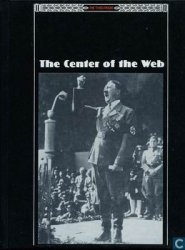Among the most interesting features of ethnographically studied societies in Melanesia are its extensive exchange systems, often involving dozens of communities speaking a variety of mutually unintelligible languages. The most famous of these systems is the Kula ring of the Massim district described by Malinowski, but anthropologists have described other networks including the Hiri trade between Port Moresby and the Papuan Gulf, the exchange system across the Vitiaz Strait that linked communities from Lae to Madang and west New Britain, the islands in Geelvinck Bay, and the extensive network along the Sepik Coast. All of these networks involved exchanges of pottery, shell rings and other ornaments, and a variety of other crafts, raw materials, and foodstuffs. Although pottery, shell ornaments, obsidian, chert, and jade preserve well in archaeological sites, most other materials do not, making it extremely difficult to see continuity from prehistory into the historic record.
Two strategies have been suggested as ways of exploring these continuities. Ian Hughes took an ethnographic approach, conducting interviews with dozens of communities across the highlands and into the lowlands. These interviews recorded oral accounts about traditional exchanges in the generations just prior to contact, and unlike most parts of Melanesia they were possible because first contact came so late to the highlands, from about 1930. Hughes noted a remarkable movement of objects from community to community across diverse language groups, even between groups that were chronically at war.
A similar strategy has been employed by Welsch and Terrell, who attempted to document the extent and nature of the precontact and early postcontact exchange system. They found that precontact exchanges involved pottery, shell rings, foodstuffs, raw materials, and a wide variety of goods such as bows, arrows, and string bags. Along the Sepik coast exchange was organized around hereditary friendship rather than as trade between anonymous partners. In precontact times most individuals had friends in 20 to 40 communities, many speaking different languages. This network resembles the exchange network across the Vitiaz Strait, but seems more complex and was less centered on any particular community. It consists of a more extensive social field. Such studies as this one and Hughes’s project have been challenged as ‘ethnographic analogies’ that offer little in the way of explanation for prehistoric patterns. Such studies may not describe early prehistoric patterns completely, but they are not merely ethnographic analogies because these historic patterns actually developed from the prehistoric patterns that preceded them.
The second and more obvious archaeological strategy has been employed by Ian Lilley, who excavated at Sio on the New Guinea mainland and in the Siassi islands on the other side of the Vitiaz Strait. Comparing artifactual material in these two sites, Lilley attempted to decipher from the prehistoric evidence the local development of the modern trade networks that Harding had observed first hand. But while there was some evidence of Lapita at Siassi, early crossstrait trade seems quite limited. Much later, a protosystem emerged about 1600 BP, with new ceramic traditions on the mainland sporadically traded to Siassi in exchange for New Britain obsidian. Lilley also found significant differences between this protosystem and Harding’s historic system, most notably the importance of historic middleman traders and the local emphasis on pig and dog teeth and shell bead, all of which occurred in minimal quantities.
Other scholars - especially Jim Allen, Susan Bulmer, and James W. Rhoades - have used a similar strategy to explore the development of the Hiri trading system westward into the Papuan Gulf from the Motu of Port Moresby. Excavating in different locations they compared the production of Motu pottery and its penetration into the Gulf. This exchange network was of fairly recent origins as most of the deltas in the Papuan Gulf are at most 2000 or so years old. Nevertheless, considerable continuity has been observed over the past several hundred years, much as across the Vitiaz Strait.
Geoffrey Irwin used a similar but somewhat more comprehensive approach to study the origins of the historic pottery trade at Mailu and in the Massim. Although the exchange systems in the Trobriands and other parts of the Massim centered historically on shell valuables, many other objects were exchanged as well. People at Mailu made pots in abundance, trading them to their neighbors to their east and west. Irwin observed that pottery at Mailu became thinner and thinner over time to save material and create a kind of planned obsolescence established itself as a specialized producer of pottery. But when comparing the two sites Irwin found that shell valuables in the Kula ring were sometimes traded toward Mailu, but that this path for shells waxed and waned at various times.
Each of these patterns is somewhat different, just as the local particularities are varied. Nevertheless, such studies are attempts to understand how the present and recent past is connected to the prehistoric past. In some cases, such as Lilley’s case study, there are discontinuities in the prehistoric record. But in others such as at Mailu and the Massim, the system has changed in significant ways without ever ceasing entirely. Much the same can be said about the entire broad sweep of Melanesian prehistory that stretches out over at least 40 000 years. Despite some discontinuities and abrupt changes in prehistoric social patterns, it will help archaeologists and prehistorians to see the Melanesian past as part of a very long and broad sweep of time.
See also: ExchangeSystems; Migrations: Pacific; Oceania: Australia; Micronesia; New Zealand; Plant Domestication.




 World History
World History









